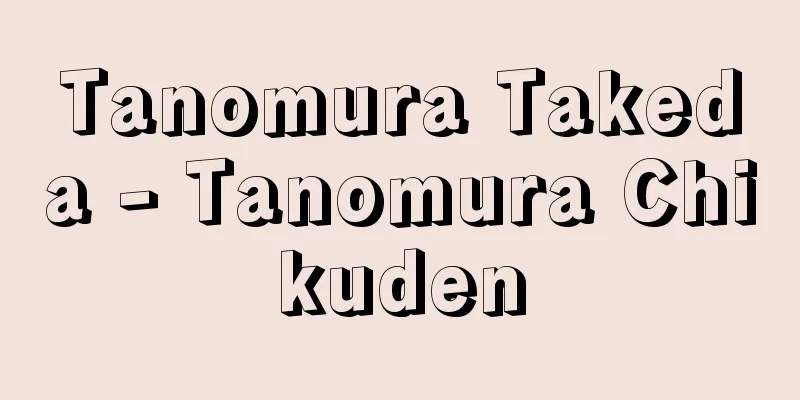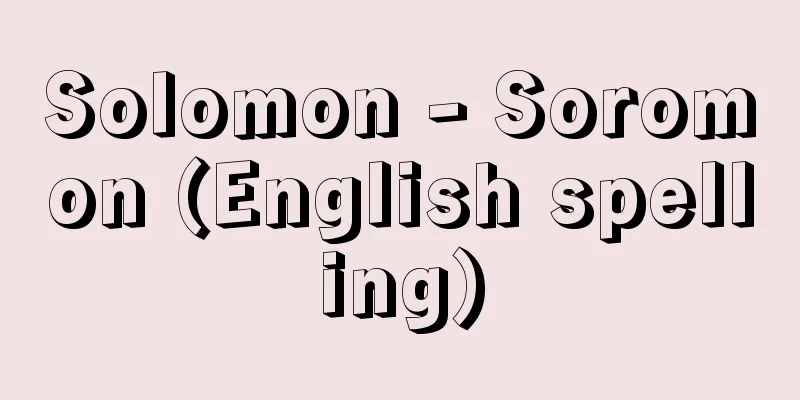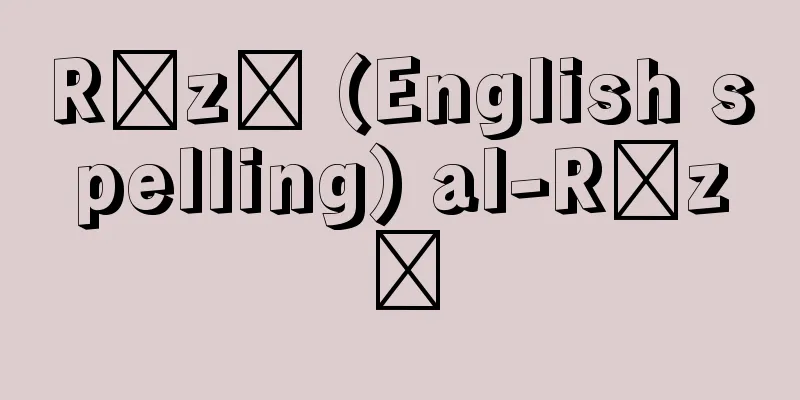Tanomura Takeda - Tanomura Chikuden

|
Year of death: June 29, 1835 (July 24, 1835) Year of birth: 10th June 1777 (14th July 1777) A Southern painter of the late Edo period. His given name was Takanori, and his pen name was Kimiyoshi. In addition to Takeda, he also had many other titles, such as Country Child and Old Painter. He was the second son of a doctor in the Oka domain of Takeda, Bungo Province (Taketa City, Oita Prefecture). He studied at the domain school, Yugakukan, and initially tried to follow the medical profession but did not want to, so at the age of 22 he began working at Yugakukan and became a Confucian scholar. At Yugakukan, he worked under Karahashi Kimiyama on the compilation of Bungo Kokushi and rose to the position of head. At the age of 27, he inherited the family headship and was given a stipend for 12 people, but around this time he interacted with many literati and artists in Edo and in Kyoto, where he had visited for treatment for an eye disease he had had since childhood. Around this time, he had been thinking about retiring, and in the years 1811 and 1812, peasant uprisings broke out within the domain. Takeda submitted proposals for reform of the domain's government to the domain again, but none of them were accepted. Finally, in the year 1810, he submitted his resignation and retired. From then on, he began to live a life centered on poetry, calligraphy, and painting, and he often traveled between his hometown and Kyoto and Osaka, and also traveled around his hometown and to Nagasaki. In Kyoto and Osaka, he interacted with Kimura Kenkado, Urakami Gyokudo and Shunkin, Okada Yoneyamajin and Han'e, and Rai Sanyo, who were central figures in the world of literature and ink at the time. He received correspondence lessons in painting from Tani Buncho, but from the age of 20, he studied under Fuchino Shinsai and Watanabe Hojima in his hometown, and after resigning from his position, he gradually leaned toward Nanshu painting. Takeda's paintings, with their soft, layered lines, are elegant and serene, reflecting his personality, and among Japanese Nanga paintings, they are the closest to the orthodox Chinese Southern School style. His small pieces are particularly excellent, and he has left us works such as "Funamado Kogicho" (Tokyo National Museum), "Yifu Ichirakucho" (Neiraku Art Museum), and "Ping Meizu" (private collection). Takeda was also a theorist, and in 1835 (Tenpo 6), he published "Sanchujin Rousetsu," a collection of 100 short sentences on painting theory, works, and painter criticism, and "Takedasou Shiyu Garoku" (completed in 1833, published posthumously), which contains short biographies of his teachers, friends, and pupils. Both of these occupy a unique place in art history, backed by Takeda's wide-ranging acquaintances and deep insight into painting. He also wrote many other books, including "Tenshi Zufu," "Tsu Sek Sosoroku," and "Takedasou Bao Cha Ket." <Works> "Complete Works of Tanomura Takeda" <References> "Daifu Ryu Tanomura Takeda" edited by Yoshinao Kizaki, "Takeda Sensei Gafu" edited by Kyoto Museum, "Takeda Famous Sites Illustrated Book" edited by Soshin'an Tonokari (Hoshino Suzu) Source: Asahi Japanese Historical Biography: Asahi Shimbun Publications Inc. About Asahi Japanese Historical Biography |
|
没年:天保6.6.29(1835.7.24) 生年:安永6.6.10(1777.7.14) 江戸後期の南画家。名は孝憲。字は君彝。竹田のほかに田舎児,老画師など多くの号を持つ。豊後国竹田(大分県竹田市)岡藩藩医の次男。藩校由学館に学び,はじめ医業をつぐが好まず,22歳で由学館に出仕して儒員となる。由学館では唐橋君山の下で『豊後国志』の編纂に従うなどして頭取にまで進んだ。27歳で家督を相続,12人扶持を給せられたが,この前後には江戸で,また,幼児期からの眼病治療のため訪れた京都で多くの文人墨客と交流している。このころから隠退の気持ちがあったところへ,文化8,9(1811,12)の両年,藩内に百姓一揆が起こり,これに際して竹田は再度にわたって藩政改革についての建言書を藩に提出したが,いずれも容れられず,ついに同10年辞職願を出して隠退した。以後,詩書画を中心とする生活に入り,郷里と京坂の間をしばしば往来,また郷里近辺や長崎を旅行するなどしてすごした。京坂では,木村蒹葭堂,浦上玉堂・春琴父子,岡田米山人・半江父子,頼山陽ら,当時の文墨界の中心人物らと交流している。 絵は谷文晁の通信教授を受けたりもしたが,20歳のころより郷里の淵野真斎,渡辺蓬島に学び,辞職後は,次第に南宗画へと傾斜していった。柔らかい描線を重ねる竹田の画は,その人柄を反映して気品高く,穏やかであり,日本の南画のなかでは,最も中国の正統的な南宗様式に近い。ことに小品に優れたものがあり,「船窓小戯帖」(東京国立博物館蔵),「亦復一楽帖」(寧楽美術館蔵),「瓶梅図」(個人蔵)などの作品をのこしている。一方,竹田は理論家で,天保6(1835)年には,画論や作品,画家評などを短文百カ条で綴った『山中人饒舌』,師友や弟子などの小伝を収録した『竹田荘師友画録』(1833年脱稿,没後に刊行)があり,いずれも,竹田の幅広い交遊と,絵画に対する高い識見に裏打ちされて,美術史上に独自の位置を占めている。ほかに『填詞図譜』『屠赤瑣瑣録』『竹田荘泡茶訣』など多くの書を著した。<著作>『田能村竹田全集』<参考文献>木崎好尚編『大風流田能村竹田』,京都博物館編『竹田先生画譜』,外狩素心庵編『竹田名蹟大図誌』 (星野鈴) 出典 朝日日本歴史人物事典:(株)朝日新聞出版朝日日本歴史人物事典について 情報 |
Recommend
Aster tataricus L.fil.
A perennial plant of the Asteraceae family (illust...
comitia curiata (English notation) comitia curiata
...The tribunus militum, commander of the infantr...
Yantra (English spelling) yantra [Sanskrit]
Symbolic geometric figures are used by Hindus, esp...
Chimú Culture
A pre-Inca culture that flourished in the valleys...
Depopulation Acts
…As a result, feudal lords expelled the peasants ...
Jean-François Paillard
1928‐ French conductor. After studying mathematics...
Ezoharuzemi - Ezoharuzemi
An insect belonging to the order Hemiptera and fa...
Tettigarctidae
...The female has a sturdy ovipositor at the end ...
Discipline
...In addition to the Hendekae (11 people), the E...
Hipster
...In Japan, the influence of hipsters can be see...
Serous inflammation
...In addition, the histopathological classificat...
Paper mulberry (Broussonetia kazinoki)
A deciduous shrub of the mulberry family, found in...
Industrial archaeology (English spelling)
Archaeology is the study of existing industrial h...
Mannheim, A. (English spelling) MannheimA
...A tool designed to simplify calculations such ...
Dismissal negotiation terms and conditions
...Thirdly, management measures directly or indir...
![Potomac [river] - Potomac](/upload/images/67ccdb95c9abb.webp)



![Shigenobu [town] - Shigenobu](/upload/images/67cbbee01f2ab.webp)




